Mint jelly is a classic condiment around the holidays, and its bright flavor and cheerful green color make the perfect complement to roasted lamb, pork, and other dishes. But did you know that mint jelly is super easy to make at home, and you can easily whip up a batch of canned jellies from the homegrown mint in your garden?
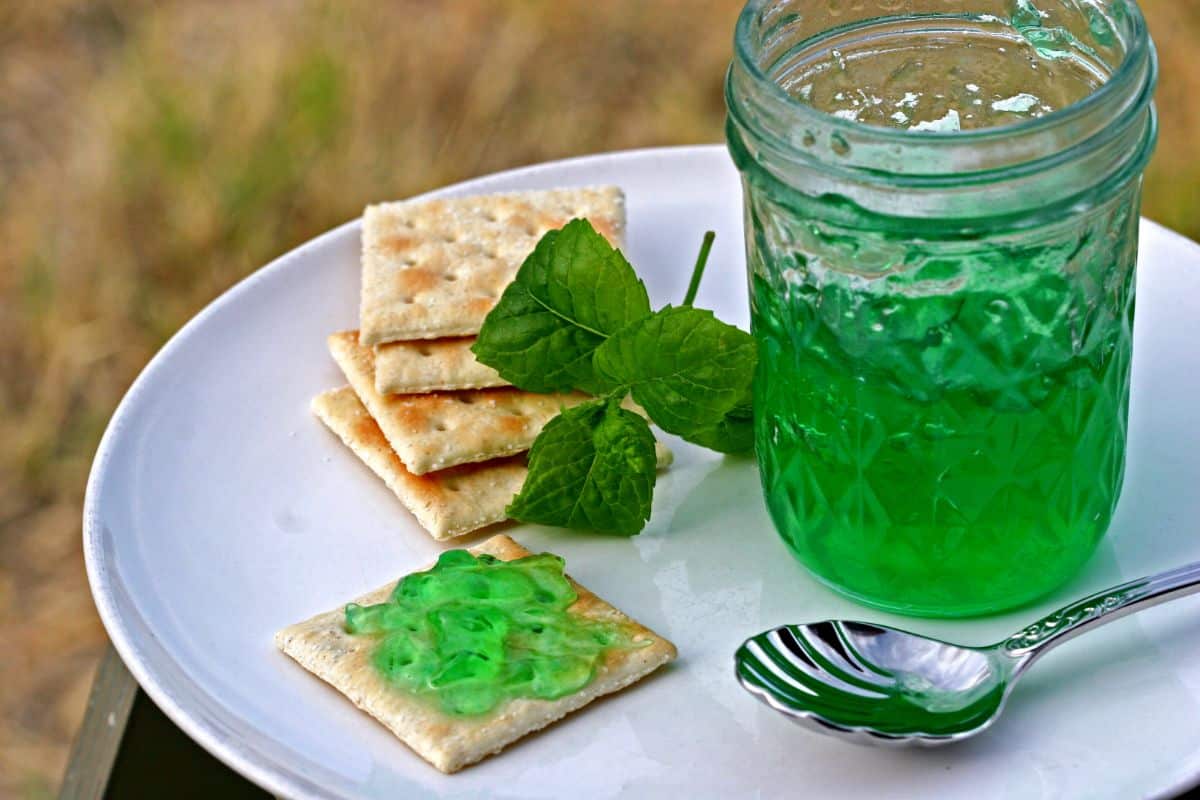
Mint plants are vigorous growers that can rapidly spread throughout lawns and gardens and overwhelm neighboring plants. But if you have too much mint on hand or you just love the taste of mint jelly, using fresh mint to make a delicious homemade condiment is a smart way to use up your herbs and get the freshest flavored jelly around. Read on for an easy how-to on making homemade mint jelly, as well as some suggestions on other herbal jellies that you can make with plants in your herb garden.
Jump to:
How to make homemade mint jelly
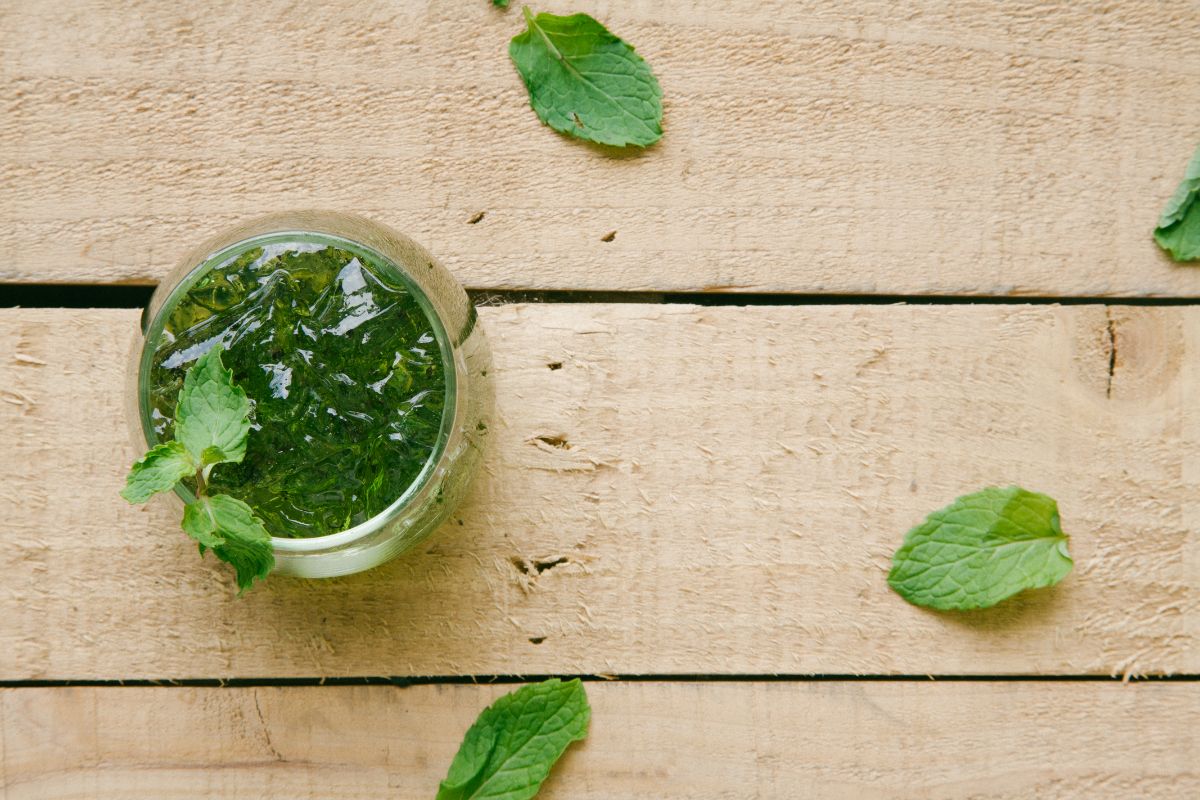
Mint jelly may be a flavor sensation, but it’s actually incredibly easy to make. If you already have canning equipment on hand, you can make a large batch of mint jelly to store in your pantry or to share with friends. And best of all, the techniques used to make mint jelly can easily be applied to other herbal jellies, giving you tons of delicious options for home preserving!
What you’ll need:
- 1 ½ cups of fresh mint
- 3 ¼ cups of water
- 1 box of pectin (1.75 ounces)
- 4 cups of granulated sugar
- ½ teaspoon of lemon juice
- 2 to 3 drops of food coloring (optional)
- Cutting board
- Knife
- Small saucepan with a lid
- Wooden spoon
- Measuring cup
- Fine mesh colander
- Clean towel
- Large stock pot for canning
- Glass canning jars and new lids
- Canning funnel
- Canning jar lifter
The process
- Chop your herbs.
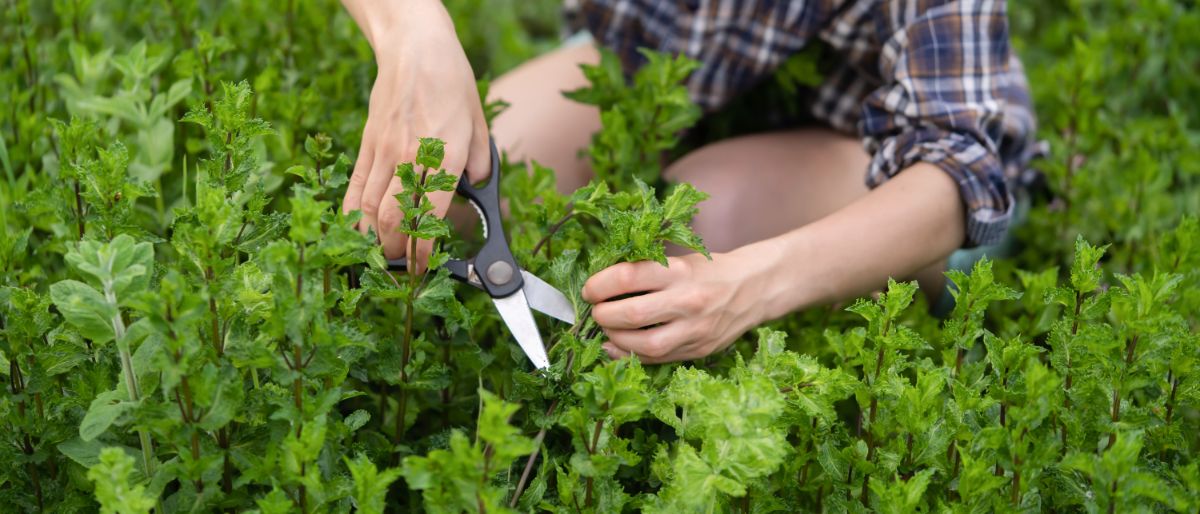
To get started, rinse and destem your mint plants. Then roughly chop or crush the leaves to release their volatile oils.
- Boil.
Next, add the chopped mint and 3 ¼ cups of water to a saucepan and bring the mixture to a boil on your stove.
- Steep.
Once the mixture has reached a rolling boil, remove the saucepan from the stove and cover it with a lid. Put the water and mint mixture to the side and allow it to steep for about 10 minutes.
- Strain.
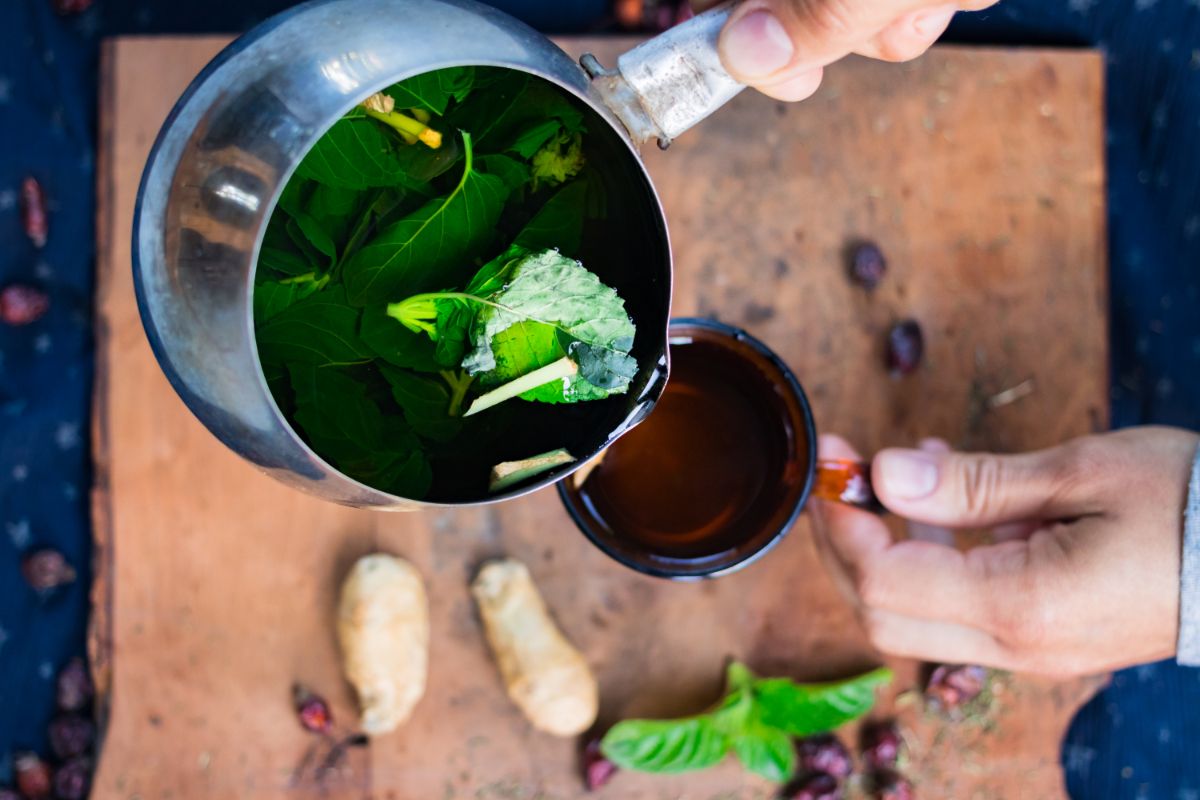
After steeping, strain the water and herbs through a fine mesh colander and reserve 3 cups of the herbal water. Compost the remaining mint leaves.
- Combine the ingredients.
Pour the herbal water back into your saucepan and mix in the food coloring (if you’re using it) and the lemon juice. Then blend in 1.75 ounces of pectin.
- Boil again.
While stirring, bring the mixture to a rolling boil again.
- Add sugar.
When the herbal water is boiling, mix in 4 cups of sugar and keep stirring.
- Cook.
Boil the mixture for 1 minute, making sure that the water is boiling hard enough that you can’t stir the bubbles down.
- Pour into jars.
After cooking the mixture for 1 minute, remove your saucepan from the stove and carefully pour the mixture into clean, sterilized jars. Using a canning funnel is recommended as it can prevent mess and spills. Once you’ve filled up your jars, wipe the rims dry with a clean towel and screw on new canning lids.
- Can your jellies.
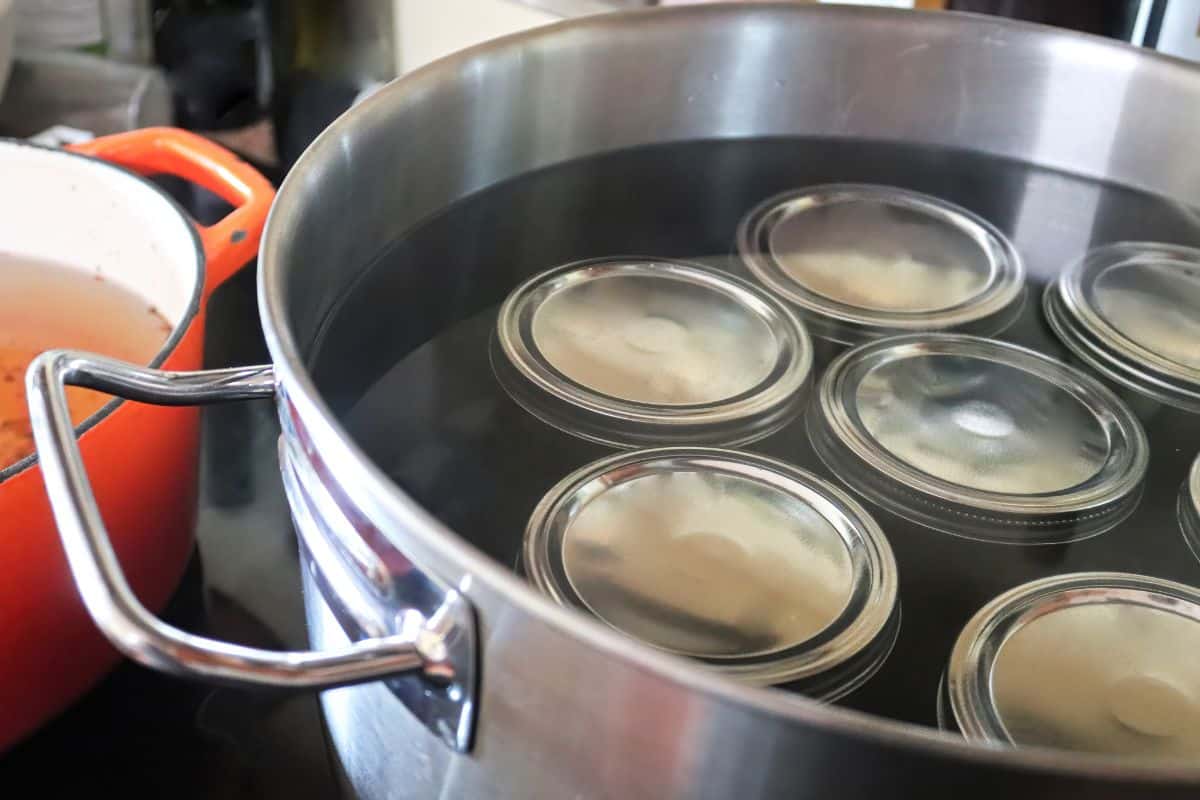
You can use your mint jelly without canning it, but it won’t last as long, and it will need to be stored in your fridge. If you don’t want to water bath can your jars, place them in your refrigerator for a few hours before using them to allow the pectin to set.
If, however, you would like to store your jars at room temperature in your pantry, proceed to the water bath canning steps below.
First, carefully place your jars in a large stock pot with water. The water you use should be approximately the same temperature as your mint jelly jars to keep the jars from breaking due to temperature stress. Make sure your jars are covered with at least 1” of water.
Bring the water to a boil and process your mint jelly jars for 10 minutes. During this time, your jars should always be covered with water. It can help to keep a tea kettle of pre-boiled water on your stove to pour into the stockpot if too much water evaporates while the jars are processing.
After processing for 10 minutes, remove the jars from the stockpot with a jar lifter and allow them to cool on a clean towel for 24 hours. During this time, keep your jars upright and don’t fiddle with their lids, as this can compromise the canning seal.
Once the jars have cooled for 24 hours, remove the canning rings (but keep the lids on!) and label and date your jars with a permanent marker before placing them in your pantry. If any jars didn’t seal correctly, move them to your refrigerator and use them right away. When properly canned, homemade mint jelly should stay fresh in your pantry for at least a year.
Other herbal jellies to try
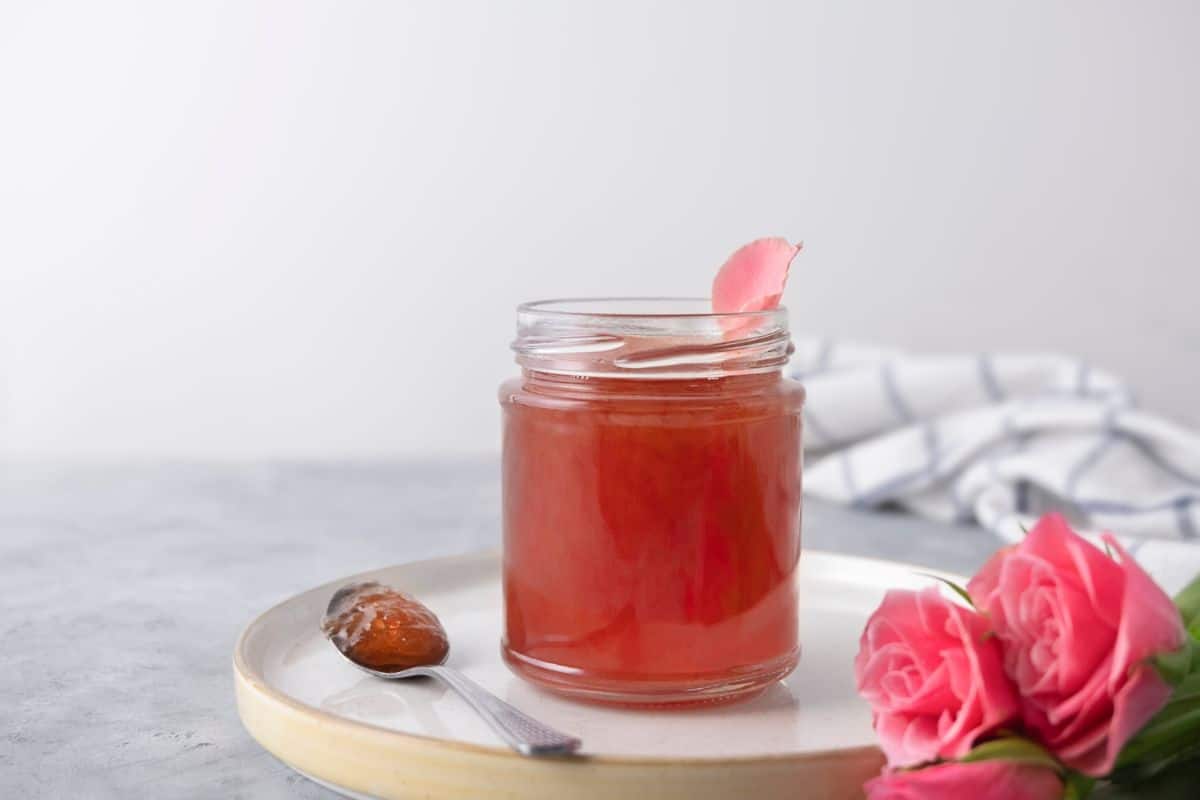
As you can see, making mint jelly is quite simple, and it basically starts out with brewing herbs into a hot tea. After that, pectin, sugar, and a few other ingredients are worked into the mixture to make jelly, but these simple steps can be expanded to include other herbal blends too. If you have success with making mint jelly, you may want to try out other homemade jelly recipes, such as:
- Chive jelly or chive blossom jelly
- Rosemary jelly
- Lavender jelly
- Holy basil jelly
- Basil jelly
- Thyme jelly
- Ginger jelly
- Turmeric jelly
- Lemon balm jelly
- Rosehip jelly
And, because jellies start off with a tea base, you can also make homemade jelly out of black tea, matcha tea, Earl Grey tea, or green tea!
Frequently asked questions
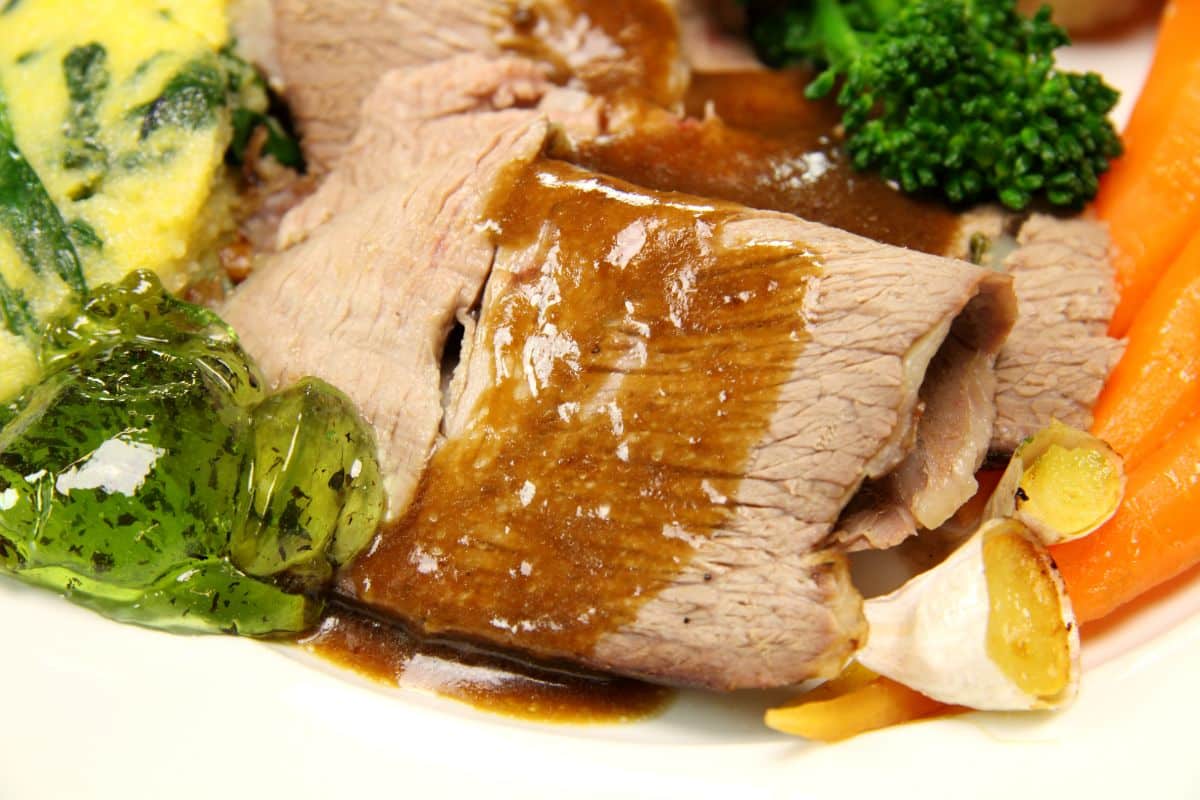
Most often, mint jelly is served as a condiment on roasted lamb and pork dishes, but it has tons of other uses, including some vegetarian-friendly ones! If you don’t want to use mint jelly with lamb, try it out on a bagel with cream cheese or mix it with yogurt for a healthy dessert. Mint jelly can also be blended with olive oil, lemon juice, and mustard to create a homemade salad dressing, or it can be stirred into your favorite hot tea for extra sweetness.
If you don’t can fresh mint jelly, it will last in your refrigerator for about one month. For longer-term storage, mint jelly needs to be preserved with water bath canning methods (pressure canning is not recommended for jellies). After canning, mint jelly can be stored at room temperature for at least one year.
Both mint sauce and mint jelly pair nicely with lamb and meat dishes, but these two condiments are slightly different. Mint sauce is thinner, and it has a more acidic flavor. Mint jelly, on the other hand, has a thicker consistency and a sweeter taste.
Making homemade mint jelly is an excellent way to use up a bumper crop of mint. But if you’re looking for more creative ways to use fresh mint, you can also use leaves in salads or chop them up and blend them into salad dressings, smoothies, and pesto. Mint can also be dried and mixed into herbal tea blends, or fresh leaves can be dipped in chocolate and then served with your favorite desserts.
If you can’t use all of your fresh mint right away, mint leaves can also be dehydrated in a food dehydrator, and then the leaves can be crumbled and stored in your spice cabinet. Mint leaves can also be frozen whole or chopped and frozen with water in ice cube trays. Then, when you want that fresh, minty flavor, all you need to do is pop out a mint ice cube and mix it into sautés, hot teas, and more.
No. Basil and a few other herbs need to be blanched prior to freezing to preserve their color, flavor, and texture. Mint, however, does not need this treatment, and it can be frozen immediately after harvesting.
Summary
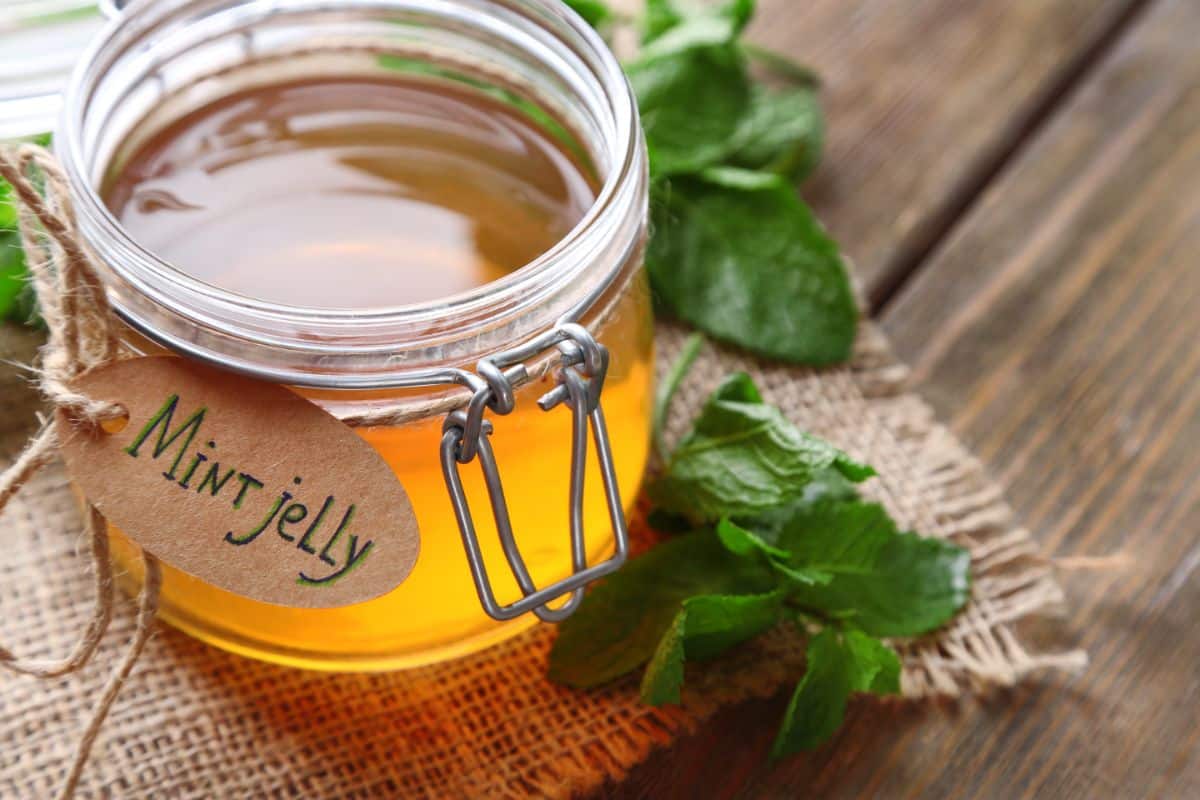
Mint is one of the easiest herbs to grow, and it’s versatile enough for both sweet and savory dishes. It can even be used to make an ant repelling cleaning spray! But if you’re looking for a recipe that you can enjoy throughout the year and share with friends, making homemade mint jelly is at the top of the list. While mint jelly pairs well with a range of dishes, it’s also an elegant hostess dish, especially when added to a nice basket with good, hard cheese, some crackers, and nice, dry wine.
We hope you liked this guide on mint jelly, but if you’re looking for more creative recipes to help you use up your garden harvest, we have that too! Check out our guide on how to make lacto-fermented sauerkraut, or read up on the best herbs to grow for herbal teas right here.
Homegrown Mint Jelly Recipe
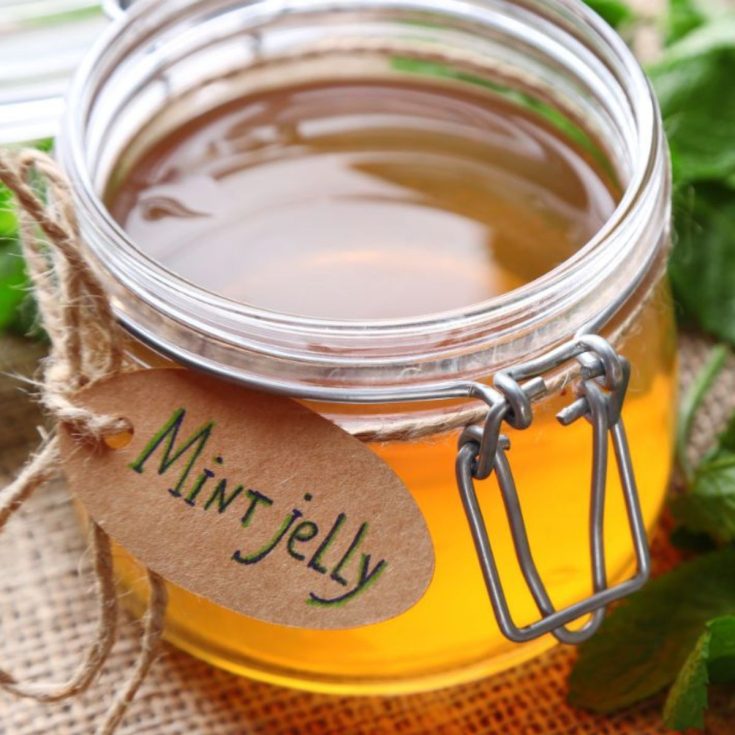
Love the taste of fresh mint? Learn how to make your own mint jelly using homegrown mint leaves with this simple recipe.
Ingredients
- 1 ½ cups of fresh mint
- 3 ¼ cups of water
- 1 box of pectin (1.75 ounces)
- 4 cups of granulated sugar
- ½ teaspoon of lemon juice
- 2 to 3 drops of food coloring (optional)
Instructions
- Chop your herbs. To get started, rinse and destem your mint plants. Then roughly chop or crush the leaves to release their volatile oils.
- Boil. Next, add the chopped mint and 3 ¼ cups of water to a saucepan and bring the mixture to a boil on your stove.
- Steep. Once the mixture has reached a rolling boil, remove the saucepan from the stove and cover it with a lid. Put the water and mint mixture to the side and allow it to steep for about 10 minutes.
- Strain. After steeping, strain the water and herbs through a fine mesh colander and reserve 3 cups of the herbal water. Compost the remaining mint leaves.
- Combine the ingredients. Pour the herbal water back into your saucepan and mix in the food coloring (if you’re using it) and the lemon juice. Then blend in 1.75 ounces of pectin.
- Boil again. While stirring, bring the mixture to a rolling boil again.
- Add sugar. When the herbal water is boiling, mix in 4 cups of sugar and keep stirring.
- Cook. Boil the mixture for 1 minute, making sure that the water is boiling hard enough that you can’t stir the bubbles down.
- Pour into jars. After cooking the mixture for 1 minute, remove your saucepan from the stove and carefully pour the mixture into clean, sterilized jars. Using a canning funnel is recommended as it can prevent mess and spills. Once you’ve filled up your jars, wipe the rims dry with a clean towel and screw on new canning lids.
- Can your jellies. You can use your mint jelly without canning it, but it won’t last as long, and it will need to be stored in your fridge. If you don’t want to water bath can your jars, place them in your refrigerator for a few hours before using them to allow the pectin to set.
Notes
- Mint jelly may be a flavor sensation, but it’s actually incredibly easy to make. If you already have canning equipment on hand, you can make a large batch of mint jelly to store in your pantry or to share with friends. And best of all, the techniques used to make mint jelly can easily be applied to other herbal jellies, giving you tons of delicious options for home preserving!
- If you don’t can fresh mint jelly, it will last in your refrigerator for about one month. For longer-term storage, mint jelly needs to be preserved with water bath canning methods (pressure canning is not recommended for jellies). After canning, mint jelly can be stored at room temperature for at least one year.

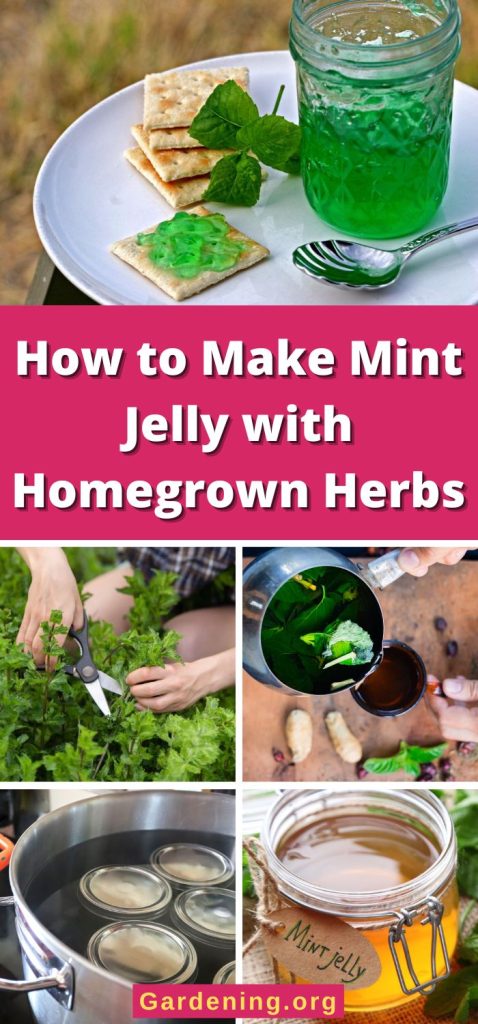
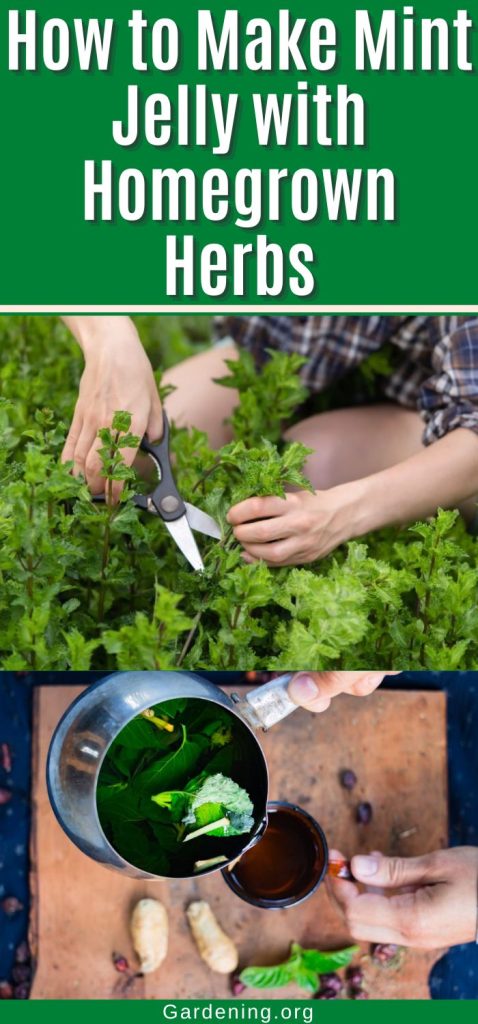

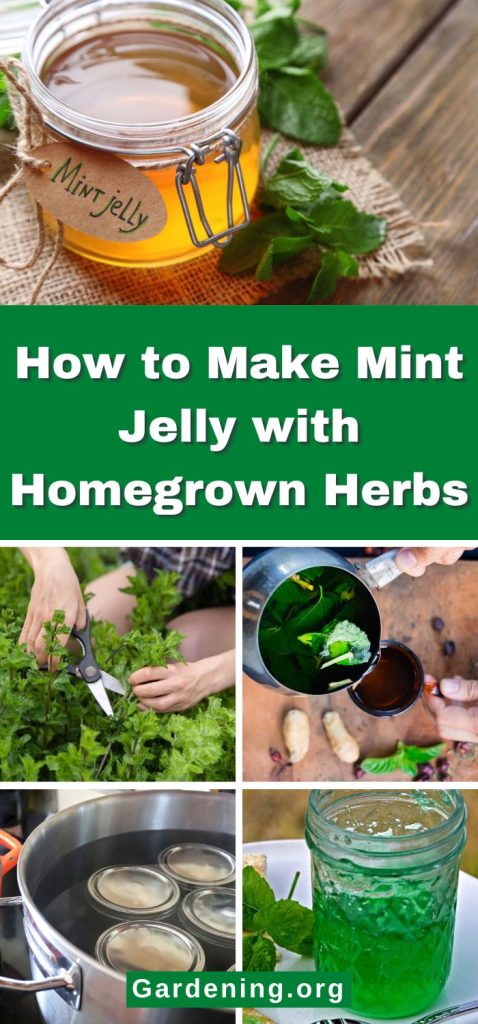

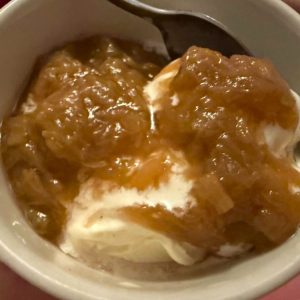
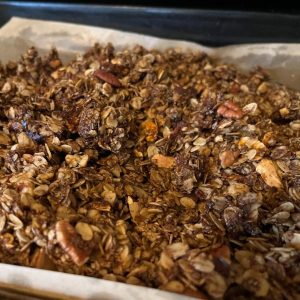
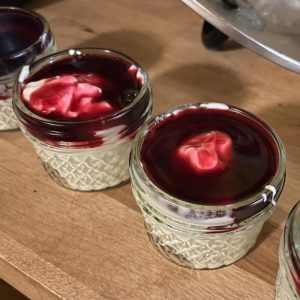
Leave a Reply